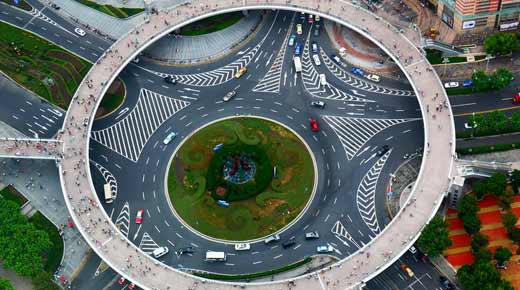Ever since I visited Italy more than a decade ago my inner geek has had a fascination with traffic engineering. If you’ve visited Italy, or many similar places, you probably know why. Traffic appears chaotic, thanks in part to what appears at first glance to be a lack of signals and other controls. To those of us with highly regimented traffic control systems, this feels crazy and even scary. Until we realize something: Traffic flows continuously, pretty much everywhere.
|
ADVERTISEMENT |
Now it may not be a fast, but the net effect is often more flow than the stop-and-go, signal-driven batch movement that exists in many U.S. cities. Traffic engineers have recognized this as well, with many cities intentionally removing signals.
“In fact, the chaos associated with traffic in developing countries is becoming all the rage among a new wave of traffic engineers in mainland Europe and, more recently, in the United Kingdom,” writes Linda Baker in the article, “Why Don’t We Do It in the Road?”
…

Comments
traffic flow
i like that you raise the point that the circles kind of divide the drivers into us and them. near me in ann arbor and brighton michigan about 10 years ago there were several traffic circles installed. Three were at a high traffic area where US 23 intersects with road that has two shopping malls. till this day whenever the topic of those circles comes up the opinions are greatly polarized. those circles are more complex, with on ramp and off ramp connections. i have missed my proper exit from them a couple times before i figured them out. they do engage the drivers, and i personally like that.
the other three were on a two lane road (Maple) that passed in front of a new major high school in ann arbor, skyline. one of the circles is half a block away from the school.. the freeway M14 exits onto Maple there. it creates an easily crossable intersection because all the drivers have to slow down to 20 to take the circle. i have walked and biked through it hundreds of times, and find it very safe. most of the drivers stop and let pedestrians cross, even though they have the right of way.
now, my workplace used to be much more like circles, and then we were bought by a much larger company, and have been becoming more and more rigid. i much prefer the flow than the rigidity. everyone there who couldn't handle the flow usually weeding themseleves out in a couple months., it's not for everyone. now it is the opposite, where peole who prefer rigidity are more at home, and a copule of my flow loving colleagues are being chastized by management for overstepping boundaries that didn't used to exist.
Add new comment